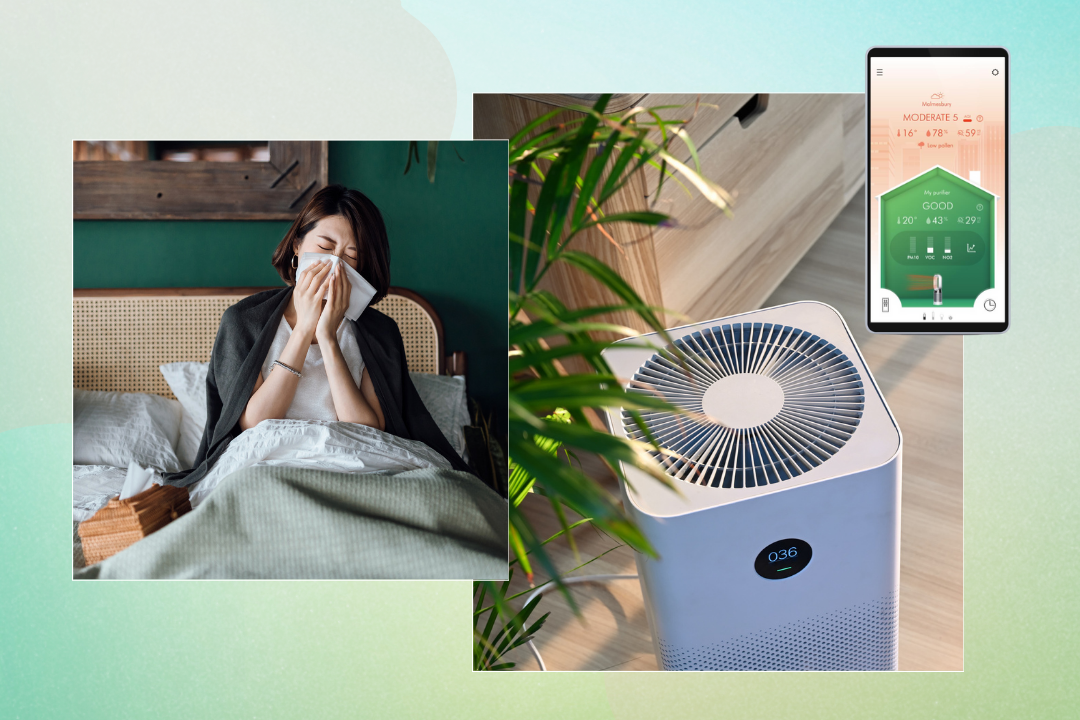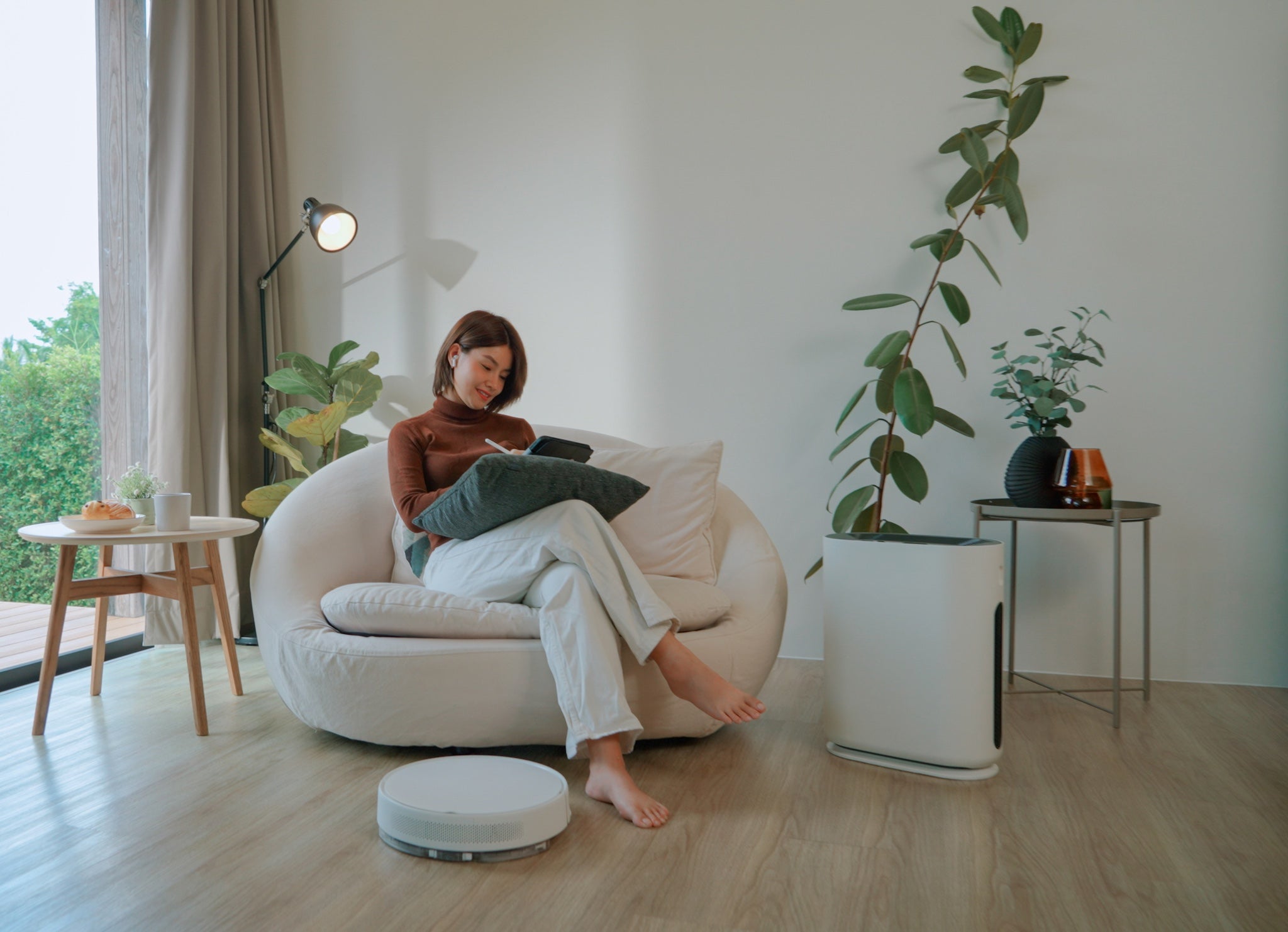The Independent's journalism is supported by our readers. When you purchase through links on our site, we may earn commission.
The air in your home could be making you sick – here’s how to improve it
How often do you think about the air pollution in your home?

Your support helps us to tell the story
From reproductive rights to climate change to Big Tech, The Independent is on the ground when the story is developing. Whether it's investigating the financials of Elon Musk's pro-Trump PAC or producing our latest documentary, 'The A Word', which shines a light on the American women fighting for reproductive rights, we know how important it is to parse out the facts from the messaging.
At such a critical moment in US history, we need reporters on the ground. Your donation allows us to keep sending journalists to speak to both sides of the story.
The Independent is trusted by Americans across the entire political spectrum. And unlike many other quality news outlets, we choose not to lock Americans out of our reporting and analysis with paywalls. We believe quality journalism should be available to everyone, paid for by those who can afford it.
Your support makes all the difference.When we think about air pollution, our thoughts often turn to cars on the road and busy city centres. Chances are you probably don’t think about the air in your own home. But pollution appears in many forms and often the air inside our houses can be poor quality, to the extent that it can actually affect our health and wellbeing.
In fact Giles Morgan, environmental care engineer at Dyson explains that “air inside our homes can be up to five times more polluted than the air outside. As we spend more than 14 hours a day indoors on average, we can be breathing potentially dirty air all this time.”
Irritants in the air can affect the health and effectiveness of your respiratory system, make it more difficult to breathe and can cause allergic reactions and flare-ups for people who suffer from immune issues like asthma and eczema. Long-term it’s been suggested that air pollution can cause headaches, poor sleep and weakened immunity so experts suggest it’s worth taking a look at the level of potential irritants in your home.
What affects indoor air quality?
All sorts of things can affect the air quality in your home, from burning candles and smoke and gas from cooking to specific types of air fresheners. Some of the worst pollutants include packaging from deliveries and certain cleaning products. Impurities in indoor air can also include tiny bacterial and allergen particles like pollen, mould spores, dust mites and dander from pet fur. When all of these particles from various sources are combined, the quality of the air in your home can drop without you even realising it – and this can get much worse during the winter months when our houses are far less ventilated.
GP Dr Nisa Aslam explains that “winter provides a perfect environment for house-dust mites because we keep windows closed and heating on and this increases the warmth and humidity they love. Condensation around windows and humidity also promote the growth of mould.”
Read more: 13 best dehumidifiers to help tackle damp and mould at home
When our bodies have to work that much harder to process irritants in the air, we can become more susceptible to infections and viruses, especially during cold and flu season. Morgan also explains that “while it is well-known that air pollution can be harmful to the respiratory system, the connection between pollution and skin health is often overlooked. Even at a glance, the research is telling us that there is a real link between pollution exposure and the wellbeing of our skin as a factor for accelerated ageing, causing pigment spots and wrinkles.”
So while keeping your home warm with the doors and windows sealed might seem like a good idea in theory, this could be doing you more harm than good, especially if there are other irritants at work.
Chemist and natural health specialist, Dr Tim Bond says: “Indoor air pollution can negatively impact the health of ourselves and family members, including children. Respiratory problems, skin irritations, coughs and colds can be caused by allergens in the air, plus these allergens can further exacerbate problems for those with allergies already. It’s estimated that, In industrialised countries like the UK, one in four people is affected by microscopic irritants.”
How to improve the air quality in your home
Cleaning
So how can you tell if the air quality in your home is making you sick? And what can you do to improve it? According to research from Puressentiel, since coronavirus, four in ten Brits now spend more time keeping their home clean in a bid to prevent the spread of germs and irritants and cleaning is a good place to start.
However, there are a few things to bear in mind about cleaning supplies. Products like aerosol sprays release byproducts called VOCs (volatile organic compounds) into the air. Some VOCs are hazardous when inhaled and others might react with existing VOCs already in your home. Morgan explains that these VOCs might be formaldehyde (yes, there will be levels of this in your home), as well as particulate matter such as pollen, dust, bacteria and nitrogen dioxide.
Often many cleaning products will contain ingredients like chlorine, ammonia and synthetic perfumes which can all pollute the air and irritate your respiratory system, so it’s worth checking your cleaning supplies before you try to eliminate one type of potential irritant with another.
The best way to clear your home of irritants in the air is to vacuum. “Look for a vacuum with high efficiency particulate air (HEPA) filters that can trap more house dust mites than regular vacuum cleaners,” advises Dr Bond. Along with vacuuming floors, soft furnishings and surfaces, it’s advised to mop your floors regularly, and to change your sheets often, washing them in hot water to eradicate dust mites.

Ventilation
Creating air flow in your home and allowing fresh air to circulate is one of the best ways to improve air quality and reduce pollution. Opening windows and doors, using extractor fans while cooking and allowing air to circulate in bathrooms and other damp spaces can vastly decrease air pollution in your home. This is especially true if you live in a smaller home or share your space with several people.
Dr Linda Khoshaba, a naturopathic endocrinologist explains that confined spaces with little ventilation can be high risk for raised CO2 levels. “High CO2 can have significant physiological impacts, such as increasing respiratory rate and heart rate, leading to shortness of breath, acidosis and cardiovascular stress. Chronic exposure may also disrupt hormone regulation and contribute to sleep disturbances, resulting in insomnia and fatigue.”
Khoshaba adds, “Elevated CO2 impairs cognitive function, leading to difficulties with concentration and decision-making, and has been linked to mood disorders like anxiety and depression. Additionally, irritability, fatigue, and headaches are common symptoms associated with prolonged exposure to high CO2 levels.” She advises improving indoor air quality by opening windows or adding indoor plants.
Houseplants are a great way to naturally purify the air in your home. Especially if opening windows is a challenge for you during the cooler months. Living plants oxygenate the air, reduce CO2 levels and naturally purify the air, so they’re a great way to affect air quality for relatively low cost. Aloe vera, fern and peace lily are all good examples of plants that will thrive indoors and work to improve air quality.
Air purifiers
Of course, some people find plants difficult to look after and these natural air purifiers might not be the best choice for everyone. The most effective way to purify the air in your home is with a purpose-built purification system that can help you track the air quality in the room and remove contaminants from the air. Purifiers are especially effective for hayfever sufferers for whom opening a window at certain times of the year is a no-go.
Purifiers use a variety of technologies to capture and eliminate pollutants. A fan draws in polluted air and layers of filters capture and remove airborne pollutants, before expelling cleaner air. Most purifiers capture particles like dust and pollen, but the best air purifiers tend to be those with HEPA filters. These have the power to remove air pollutants as small as 0.1 microns. You might also want to look for a purifier with activated carbon filters which can help to remove odours too.
“When it comes to choosing the best air purifier for your needs and your home, there are some considerations to keep in mind that will help you decide,” explains Morgan. “Taking into account allergies, room size, frequency of use and additional heating and cooling preferences can help select the best product.”
How to test the air in your home
If you’ve already taken steps to open windows and doors, invested in non-toxic cleaning products and you’re vacuuming and washing your bedding regularly, the air quality in your home should have already improved. Removing home fragrance tools like plug-in air fresheners and paraffin candles can also help, as can opening parcels with a lot of packaging outdoors. Smoking and vaping outdoors and using extractor fans in kitchens and bathrooms can also make a lot of difference.
However, it can be difficult to know just how much the air quality in your home has improved after taking these steps so you might want to consider testing using an air quality monitor too. These monitors can measure various pollutants like particulate matter, VOCs, carbon monoxide, and sometimes the humidity and temperature in the room too. Some air purifiers will also incorporate a dashboard where you can check the air quality in the room, view the most prevalent pollutants and see the quality change in real-time as the filter adapts to the air.
Improving the air quality in your home can improve your health, make it easier to breathe and get a better night’s sleep and make your home a safer place for your family. It can be as simple a task as making some small changes to the products you use and how often you clean and ventilate your home. But making sure your home is well maintained is a good way to boost air quality too. If you rent your home, make sure to check for mould or water leaks and report them quickly, and if you own your home, installing ventilation and windows that open and close effectively can help too.
Read more: Best air purifiers to help free your home of dust and allergens




Join our commenting forum
Join thought-provoking conversations, follow other Independent readers and see their replies
Comments